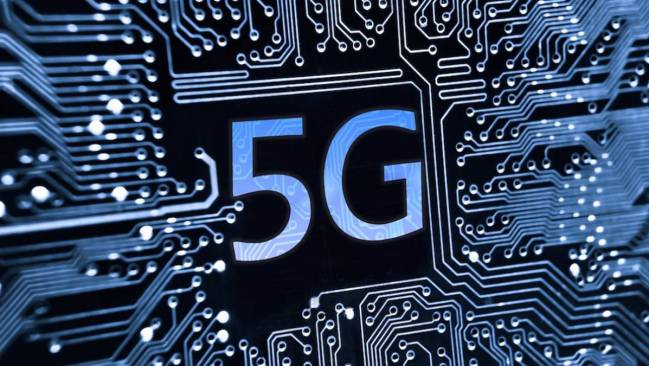IMDEA Networks

5G: the new generation of mobile networks for the Internet of the future
02 March 2015

Authors:
 Even though the deployment of 4th generation mobile networks has not yet been completed, operators and handset manufacturers, as well as leading research teams in the field, have launched a series of R&D initiatives to develop the 5th generation of mobile technology, called 5G, intending to commercialize it by 2020.
Even though the deployment of 4th generation mobile networks has not yet been completed, operators and handset manufacturers, as well as leading research teams in the field, have launched a series of R&D initiatives to develop the 5th generation of mobile technology, called 5G, intending to commercialize it by 2020.
5G represents a paradigm shift in the design of mobile networks that revolutionizes this technology to support flow, latency and scalability requirements necessary to meet such extreme use cases as augmented reality or connecting trillions of devices.
The future 5G Networks are going to transform the way we perceive and interact with the world around us. 5G Networks bring a combination of advances that will transform current reality into a “connected reality”, in which all things and every person are interconnected forming a united whole. 5G Networks will allow more than six million million systems to be connected, which includes all the planet’s inhabitants, and in addition to that, somewhere in the region of a thousand objects each. Each person will be permanently connected to their doctors, friends, colleagues, clients/suppliers and security services, but what is more, also to their car, their fridge, their favourite bakery, leisure centres, metro, airport, their home and, in short, every object that may be of interest to us. All these objects, in turn, will be connected, in such a way that a pallet, let us say, can “complain” to its source company that its delivery route is incorrect, and our boiler will be able to download software to make its operation more efficient.
The number of connected devices will be complemented by increased network capacity on three orders of magnitude. 5G Networks, therefore, will be capable of carrying 1000 times more mobile data than the 4G networks that are currently beginning to be deployed. Such a massive capability for communications will allow each person to access, send or exchange, quasi instantaneously, the sensations of their choice. Though research in 5G does not cover multimodal interfaces, the network is being designed so that these can be integrated. Augmented reality devices, brain wave interfaces, or the implantation of interface biochips will allow 5G network users to interact with each other and with all their connected devices, quite naturally, free from external devices, as an extension of their five senses. Such direct exchanges of stereoscopic images, smells, tactile information, or brain waves will be possible from wherever we are. Because, counterposed to what happens with 4G systems, 5G Networks are designed for universal geographic coverage, with the added advantage of a more seamless service with regard to the relative positions of the base station and the edge of the cell.
The heart of this network will be based on the intensive development of current virtualization technologies, converging with “cloud computing” technologies. Thus, software will play a much more important role in 5G networks than in today’s networks. Much of the dedicated communications hardware of today will be replaced by general purpose computational platforms that provide the necessary communication services via software. This will allow network control to be much more flexible and economical than at present, and better integrated with the services it supports and with telecommunications operators’ business processes. In this way, the time taken to deploy a new service in production will be reduced from the current 90 days to a much shorter term of around 90 minutes. This means that the range of supported services will be considerably more dynamic and tailored to the needs of users, both private and professional.
More economical use of energy is a further key element in 5G Networks. If we were to increase the network capacity by 1000 with today’s technology, the energy requirement would be so high that it could not be met. Therefore, energy efficiency is another major criteria in the design of 5G networks, both as regards to terminals as network elements as to the design of the network as a whole. Therefore, when it comes to 5G networks, technologies are being developed that run on just 10% of the energy used at present, in order to reduce the environmental impact derived from 5G.
To sum up, 5G Networks will lead us to a world in which distances cease to exist, and in which our sense of being and perceiving will blend with those of our fellow citizens and of the objects around us.
The European Union, with the framework research program “Horizonte 2020”, which operates since 2014 for a period of 7 years with an estimated budget of 80 billion euro, has designed a specific program to focus on this technology known as “Horizon 2020 Advanced 5G Network Infrastructure for Future Internet PPP “. This program has received a budget of 700 million Euros from the European Commission, and from 3,500 to 7,000 million euros from the private sector. The research institute IMDEA Networks is one of the main leaders at European level in the field of 5G networks.
IMDEA Networks is the coordinator of the iJOIN project, which is one of the major European projects in the field of 5G networks. iJOIN was the first Research and Technological Development (RTD) European project coordinated by a IMDEA Institute, it has received the runner-up prize to the Best European Cooperative R&D Project awarded by the Foundation for Knowledge madri+d, and it has recently been selected for a technical demonstration before the EU Commissioner for Digital Economy & Society, Günther Oettinger, at the Mobile World Congress 2015.
Moreover, IMDEA Networks Institute and Telefónica Research and Development recently established a Joint Research Unit (JRU) called “Telefónica – IMDEA Networks JRU in 5G technologies”, which aims to establish a strategic partnership that provides an operational framework for close interaction in a varied set of scientific activities.
There are three more projects associated with the Institute’s work on 5G networks. Firstly, one of IMDEA Networks’ researchers, Joerg Widmer, has been awarded a prestigious ERC Consolidator Grant to develop the SEARCHLIGHT project, devoted to investigate 60GHz networks, one of the key 5G technologies. This project has received funding of 1.7M€ for the next five years. In addition, IMDEA Networks is the technical coordinator of the European project CROWD, which has been selected by the European Commission as one of the “early 5G precursor projects”. Thirdly, IMDEA Networks leads the regional project TIGRE5, which focuses on this technology and brings together the main Madrid-based research teams working in this field.
Finally, note that IMDEA Networks is one of the few academic partners represented in the 5G-PPP Association, Partnership Board, and the ETP Steering Board, which are the entities that lead the development of the European program in 5G technology.


Recent Comments